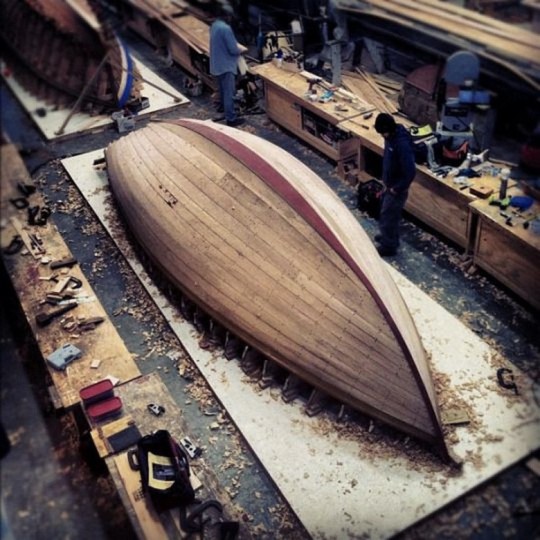#craftsmen
Text
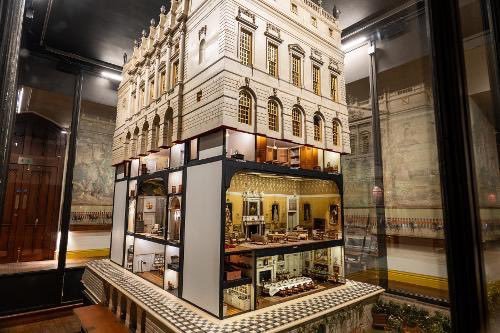
The amazing details of Queen Mary's Doll's House, now 100 years old
#Queen Mary's Doll's House#Windsor Castle#Berkshire#regal#monarchy#miniatures#plumbing#piano#craftsmen#UK#library#fireplaces#authentic#interior design#scale model
92 notes
·
View notes
Text

The streets are full of admirable craftsmen, but so few practical dreamers.
-- Man Ray
(Lenzburg, Switzerland)
#streets#dreamers#craftsmen#man ray#travel photography#lenzburg#dreams#switzerland#quote#street photography
108 notes
·
View notes
Text
"While working, unsecured, on some dome or another, Michelangelo fell and broke his neck. After a few days, he was back up, robust, gazing at the lime–washed sky. He pulled clouds, scratched devils, blew into the brass trumpets of the Resurrection. Who still has the courage to fall from a scaffold today?
Since then, craftsmen tie themselves with hundreds of belts — and not even a thought is in danger. That's why they don't do anything anymore. They don't fall — and that's their whole accomplishment."
— Marin Sorescu, Insomnia, 1971
#Marin Sorescu#literature#romanian literature#spilled ink#quotes#book quotes#literary quotes#excerpts#book excerpt#lit#michelangelo buonarroti#michelangelo#existentialism#craftsmen#books#books and libraries
23 notes
·
View notes
Text

Shinya Kimura
#motorcycle#shinya kimura#motolegends#builder#designer#customizer#craftsmen#sport bike#racing#motorsports#custom bike#custom culture#built for speed#ride hard or go home#moto love#lifestyle
18 notes
·
View notes
Text
#art#fashion#design#luxury#model#legend#high fashion#hiphop#sneakers#pharrell williams#pharrell#nigo#skateboard p#human made#louis vuitton#adidas#creative#craftsmen#producer#singer#rapper#artist#music#trending#viralshorts#viral video#shortvideo#trendingnow#viral
13 notes
·
View notes
Quote
'Apprentices? I can see to it that the finest craftsmen-'
Leonard held up a hand.
'Not craftsmen, my lord,' he said. 'I have no use for people who have learned the limits of the possible.'
Terry Pratchett - The Last Hero
#Terry Pratchett#discworld quotes#GNU Terry Pratchett#quotes#The Last Hero#Havelock Vetinari#Leonard of Quirm#apprentices#craftsmen#the limits of the possible
27 notes
·
View notes
Text
The roots of civilization supposedly lie in the transition from hunters and gatherers to farming life. But research shows the farming life wasn’t as easy as the nomadic lifestyle. So why the change? This researcher believes we need to look elsewhere to find the real roots of civilization.
#human domestication#hunter-gatherers#early farmers#nomadic lifestyle#farming lifestyle#agricultural revolution#tool makers#craftsmen#trade#einkorn#wild food#Australian Aboriginals#Kalahari bushmen#vegetable foods#artisans#primitive villages#ancient#history#ancient origins
31 notes
·
View notes
Text
Simple facts about Ancient Egypt (2)
Last time, we talked about generalities - history, geography, pharaohs, government... Today, let’s look at some of the main social classes and jobs in Ancient Egypt!
As I said before - warning, these are oversimplified and general facts for a short and easy introduction and comprehension to Ancient Egypt. These are not in-depths studies or analysis, and I might have gotten things wrong, so beware!
SCRIBES
# Scribes, from the Latin “scribere” (to write) were public writers: they were tasked with redacting administrative documents, with the job of accountants of the State, but they were also tasked with writing things such as letters, poems or fictional tales. The job of a scribe went from father to son, and every future scribe had to undergo a very strict and difficult apprenticeship. To be a scribe was a very envied position, for it was a privilege given only to boys – and to the wealthiest of boys! The material of the scribe was quite simple, all contained in a wooden case: there was just a reed pen, and two blocks of ink, one red and one black – to write, the scribe plunged the tip of his reed pen into water, and then rubbed it against either the black or red ink-block.
# Because ink was we know it today didn’t exist back then in Egypt – their “ink” was actually blocks of compact powder. Black ink was created with soot or crushed coal, whereas red ink was created with ochre. Similarly, the Ancient Egyptians did not write on paper but on papyrus – a type of material that shared its name with the type of Nile-reed it was created from. (Fun fact, the name “paper” does come from “papyrus”). Creating papyrus was done by cutting and peeling the papyrus-reed into thin slices, that were then gorged with water, placed in crosses layered on top of each other, and then brutally hit with a hammer until it became one uniformed page (the sap of the reed and the water fused together to form a sort of “glue” holding the stripes together). Finally, the page was thinned down, and smoothed with wooden items.
# Papyrus was however very costly. So, to not lose all of one’s money, Ancient Egyptians wrote for every day needs on pottery fragments or wooden planks covered in plaster. Pupils in schools for example wrote on broken pieces of bowls or vases. The papyrus, so precious, was kept exclusively for law texts and religious texts. To create 5 scrolls of papyrus, of roughly 10 meters each, a man had to work for a whole year!
# Most scribes worked for the government: one of their job was to do note down the state and quantity of the harvests each year before calculating the taxes based on the amount of harvest. They were also the accountants of the state, as well as the ones charged with writing down the laws and the orders of ministers. Other scribes rather worked for temples, where they engraved magical incantations on amulets ; and a third group acted as clerks in tribunals.
# Learning to become a scribe might look easy, since what you need to do was just copy texts all day long… But in truth it was a very hard thing! Our alphabet only has two dozen letters or so – the Egyptian scribes had to learn thousands of different signs to write down the texts, and they had to learn how to write them on every material possible. If you wanted to be a scribe, you had to go a “scribe school” – pupils usually went there are the age of ten, and left at fifteen. After these five years of studies, the scribes had to undergo an internship of five years in either the administration, in a temple or with a notary. After this internship, would-be-scribes had a final exam – and it was only then they could become certified and testified scribes, at twenty years old. Scribe school was notably a very harsh and unpleasant place – a common saying among scribe teachers was “Students have ears in the back, and these ears only listen when you hit them”. Yes, corporal punishment was a standard method of teaching in these schools – if students didn’t pay attention, spoke with each other instead of copying their texts, or wrote a hieroglyph wrong, they were immediately beaten up with a stick. In fact, to prevent the students of scribe schools from leaving unsupervised, the teachers attached to their ankles wooden blocks! Yes, just like the cartoon prisoner with the iron ball around their ankle!
# All scientists were scribes, but not all scribes were scientists (or scholars). You see, to become a scientist or a scholar you had to learn how to write and read – and to do that, you needed to become a scribe. But many scribes stopped there and did not pursue their studies further – only some decided to take on a specific field of expertise (medicine, architecture, astronomy) and thus became more than just “regular” scribes.
# Scribes wrote their text in a very specific way. They sat cross-legged on the ground, placed the papyrus they wrote on their loincloth – that was pushed by their knee very strongly on each side, so it would be a flat surface to write onto. Scribes also wrote with their pen standing up, very still – so that they wouldn’t do any stain or mess up a line, because their ink took a very long time to dry.
# Scribes were the object of admiration, but also jealousy, from the everyday ordinary Egyptian man, because scribes were very well paid AND were exempt of taxes. Plus, their work was a non-manual one, unlike the other Egyptian men who were peasants or craftsmen. This was notably why in Egyptian art scribes are always depicted with a potbelly or fat rolls – thanks to their wealth and effortless job that demanded them to sit around all day, they were the only inhabitants of Ancient Egypt who could easily become fat. In return, the scribes themselves were very proud of their position and status – and this often made them quite arrogant, according to the ancient texts. One of the favorite entertainments of the scribes was to mock other jobs or workforces of Egypt by telling funny stories or jokes about them.
PRIESTS
# Do not get things wrong: in Egyptian religion, only the pharaoh can act as an intermediary between the gods and men – he is the true voice and right hand of the gods. But then, you’ll ask, why are there priests? Well it is simply because the pharaoh is one human man, and cannot be everywhere in the country – so the pharaoh delegates his powers to the priests, who act in his name. This is something important to remember: Ancient Egypt was a form of theocracy, and the priests did not get their power from the gods but from the pharaoh. Though the priests’ role WAS to serve the gods. Ancient Egyptians and Ancient Egyptian gods had a deal worked out: the priests would tend to their need, and take care of them, through various festive celebrations and everyday rituals, and in exchanged from being tended to, the gods ensured the protection and wellness of the city/region/country they were worshiped in. As easy as that. But this explains why for example priests were not depicted on murals or paintings of temples: priests were not perceived as worthy of being depicted alongside the gods, because in the Egyptian mindset, priests are just servants – or rather some sort of religious bureaucrats. Only the pharaoh, the one and true emissary of the god, and himself equal to the gods, could be painted on the walls of temples.
# The role of priests, just like the one of scribe, usually was passed from father to son. Usually priests began their apprenticeship as children, studying at the school and at the library of the temple alongside scribes. Given being a priest was a very prestigious function (again, quite like scribes), some people rather could buy a priest job with a heavy sum of money, or it could be given by the pharaoh himself as a reward, to those that served him well and faithfully.
# In every great temple and religious center of Egypt there was, at the top of the priestly hierarchy, a great priest, or “first prophet”, named directly and personally by the pharaoh. This great priest held authority over all of the other priests, and also played a political role in the city he was in charge of. Below him came the “divine fathers”, important priests that took care of the rituals and walked in front of their god’s statue during processions. Finally, at the bottom of the hierarchy, there were the “purified ones”, whose job was to carry the god’s statue during procession, to clean up the temple every day, and to do all the chores. Speaking of cleanliness, being pure was a very big deal for Ancient Egyptian priests – they usually took four baths a day in the lake’s temple, or rather two baths during the day and two baths during the night. It was a way for them to stay “pure”.
# Priests had a LOT of work and so, to be able to rest and not die of exhaustion, there were “teams” of priests formed in temples. Each team was to work in the temple during one month while the other went to live into town, and after one month a new team went in. In smallest temple there were only two teams, each doing half of the year, but in the biggest temple, there could be up to four priest teams. And since the priests were to live in the town quite regularly, and couldn’t possibly live alone (for Egyptians a man couldn’t just live all on his own, it was not a good or healthy lifestyle), the priests were allowed and even encouraged to marry, so that when leaving the temple they could have a wife and children to return to – children that in turn would become priests once their father grew too old.
PEASANTS
# Peasants formed the bulk of the Egyptian population, and they were a key part in the wealth of the nation: without them and their constant toil, Egypt couldn’t have existed. But despite their immense utility, priests were very poor and not respected, forming the lower rank of the social hierarchy. Most of them acted like serfs, in service of great landowners, temples, or the ministers of the pharaoh. The comparison to serfs is quite relevant as, just like serfs, Egyptian peasants did not own their lands, and they could be sold just alongside the land they were dependent.
# The fields of the peasants were actually really small, roughly the size of a vegetable garden today. They were delimited by big and heavy rocks – every year, bureaucrats of the realm checked after each flood is these rocks hadn’t been move. The peasants also had to swear an oath to never move secretly the stones to augment their field – if they were caught doing that and lying about it, they had their two ears cut off!
# Scribes went three times a year into every peasant’s home. A first time to measure their field, a second time once the cereals ha d grown – to evaluate the harvest and calculate future taxes based on this hypothetical harvest – and a third time during the harvesting, to collect the taxes. Of course, on this third visit, scribes were escorted by armed soldiers. If a peasant refused to pay the taxes, he was beaten up, and/or his house and tools were taken away from him – sometimes he was even thrown into prison. According to some tales, the most extreme cases of punishment had peasants that did not pay their taxes being beaten up, tied with a rope, and thrown at the bottom of a well in front of his wife and children – who in turn were imprisoned in his place! Better pay the taxes the, you say? Well, the problem was that the taxes were calculated during January, two to three months before the actual harvest. If any sort of disaster happened, and they lost their harvest, they still had to pay the taxes as if they had a full harvest…
# No need to tell you that the peasants’ worst enemy (outside of the locust) was the hippopotamus! Hippopotami were considered a true disaster, since in a single night, a hungry hippo could eat up to sixty kilos of plants (132 pounds). If a small group of hippos came by a field in the night, in the morning nothing was left… So peasants hunted and killed hippos without pity or mercy.
CRAFTSMEN
# Craftsmen were the middle-class of Egypt, coming below the scribes and bureaucrats, but above peasants. Craftsmen worked numerous types of material: stone, wood, iron, precious metals (such as gold), leather, textiles and glass. Craftsmen never worked alone – they were always forming groups and teams, part of workshops financed by the government, or by a temple, or by a rich family. Each workshop gathered various specialists – a carpenter, a painter, a smith, a jeweler, a stone-sculptor…
# The quality of a furniture could be identified by the type of wood used: good quality furniture was done by sculpting cedar, a tree that was important from the Lebanon. High quality furniture was also often decorated with ivory or ebony. Lower quality furniture however, was usually sculpted in sycamore trees or palm trees – a wood so friable they were often covered in plaster to just be able to stand up and hold any kind of weight!
# The Egyptians discovered how to make class towards 1500 BCE. They created it with sand, salt, and they always colored their glass with metallic pigments – an Egyptian would have never created a transparent piece of glass. Egyptians loved colors, and so their glass work was always red, blue or yellow.
# Potters were considered to be “different” from other craftsmen. More specifically they were thought to practice a very “common” craft. Scribes liked to mock them by describing them as dirty, and always covered in mud. Potters did not work in the royally-sponsored workshops I described above – they rather worked all alone, for their own. They built most of everyday objects: vases, plates, cups, jars… Potters usually worked with the clay of the Nile, sculpted by hand (at first, then the potter’s wheel was invented), and then left to dry up in the sun before being “cooked” in an oven. Their other technique was to create a material by mixing sand with water, salt, ashes and lime – this substance was then placed inside molds, and placed in an ove.
# Pearls in Ancient Egypt are a fascinating thing, because Egyptians did not know about the existence of oysters – or if they did, they couldn’t access any of them. So, Egyptians created their own pearls, by polishing stones so much they were reduced to very small spheres, that were then pierced to be placed onto necklaces.
# All the gems and precious stones used by Egyptians (the red carnelian, the purple amethyst, the turquoise and the blue agate – plus gold of course) were extracted from mines located in the desert, and in which criminals and law-breakers were sent to work (because working in these mines often killed the miners). The favorite gem of the Egyptians, the lapis-lazuli, was rather important from where today’s Afghanistan is located. However, faience/earthenware was very common among Egyptians precisely because with its blue-green color it could look like emeralds or turquoises, while being much MUCH less costly. This is why there were a lot of faience jewels in Ancient Egypt – they were basically for those who wanted to look good without having the means to.
#ancient egypt#scribes#peasants#egyptian religion#egyptian priests#ancient egyptian crafts#craftsmen#ancient egyptian society
17 notes
·
View notes
Text

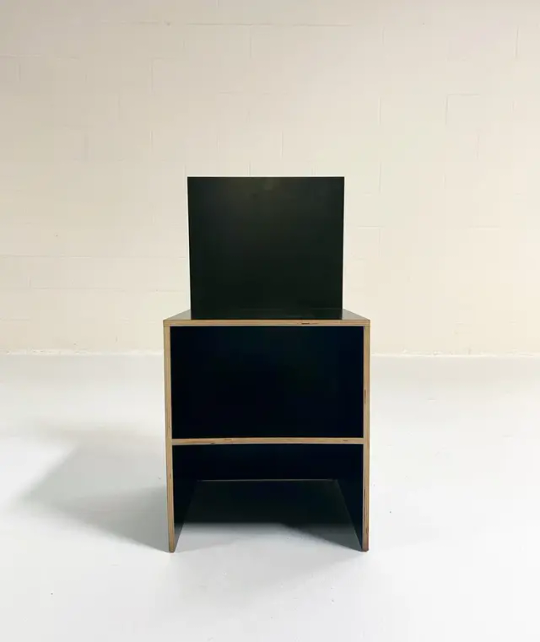
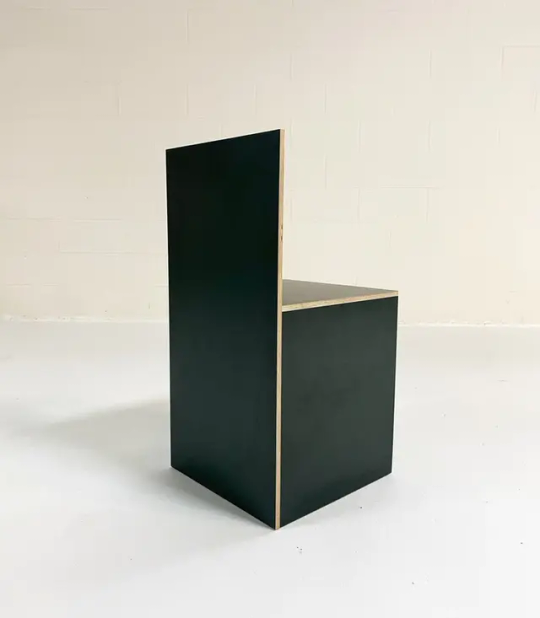


Donald Judd, "Chair 84" (1991)
In the early 1970s, Donald Judd began to design furniture for 101 Spring Street in New York. His first designs were a wood bed and metal sinks. In 1977, he returned to furniture design through necessity; he needed pieces for his children’s bedrooms in Marfa, Texas, and pieces for the entire residence.
By 1984, Judd had designed a range of wood furniture including a bed, desk, and a daybed; and metal furniture including chairs, benches, beds, and a table. That same year, Judd had his first exhibition of metal furniture at Max Protetch in New York. From 1984 to 1993, he continued to develop new designs. At this time he began writing in more formal terms about furniture and his approach to design, fabrication, sales, and distribution.
Fundamental to Judd’s designs are his specifications regarding dimensions, material type, finish, and construction of each piece. Judd specified that the quality remain high, a considered approached given that fabrication of the furniture involved the expertise and handwork of both local carpenters and master craftsmen. He selected fabricators he entrusted with the interpretations of his designs, working directly with them to develop and refine his desired level of quality."
~ From Donald Judd Foundation
Manufacturer: Wood & Plywood Furniture, USA
Date: 1991/2006
Dimensions: 15 W x 15 D x 30 H
Material: Laminate over plywood.
This model, constructed of a deep greenish black laminate over plywood, was manufactured in 2006.
Pictures Courtesy of Forsyth Art
#art#design#sculpture#furniture#minimal#seat#chair#minimalism#plywood#donald judd#84#wood&plywoodfurniture#craftsmen#millwork#geometry#forsythart#iconic
2 notes
·
View notes
Photo
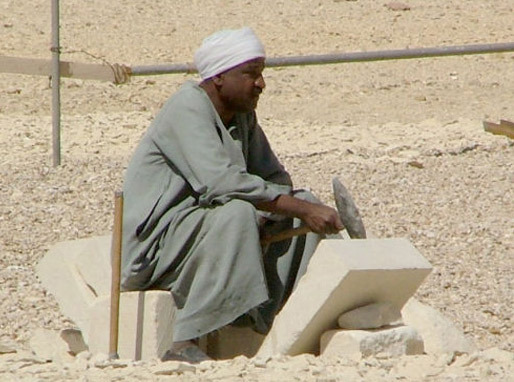
Ye Have Many Skilled Men
You have many workers such as stonecutters, masons, carpenters, and all kinds of craftsmen of gold, silver, bronze, and iron—without limit. So get started, and may the Lord be with you!
— 1 Chronicles 22:16 | Free Bible Version (FBV)
The Free Bible Version is a project of Free Bible Ministry; Copyright © 2018, Free Bible Ministry. All rights reserved.
Cross References: 1 Samuel 17:37; 1 Samuel 20:13; 1 Chronicles 22:11; 1 Chronicles 22:15
#skilled men#laborers#stonecutters#masons#carpenters#craftsmen#begin#work#Lord's presence#with Israel#1 Chronicles 22:16#Book of First Chronicles#Old Testament#FBV#Free Bible Version#Free Bible Ministry
12 notes
·
View notes
Text
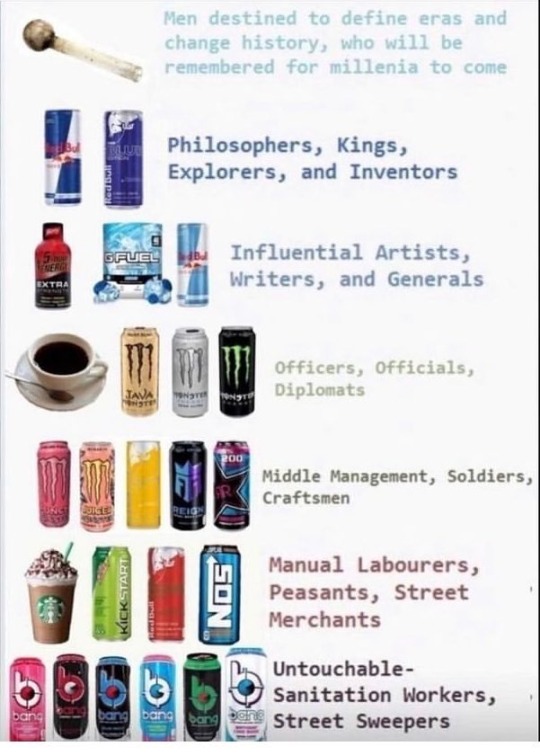
#energy drinks#crack#Red Bull#g fuel#gfuel#5 hour energy#monster#coffee#caffiene#kickstart#Starbucks#bang drink#nos Mountain Dew#philosopher#soldiers#artist#writers#craftsmen#craftsman#manual labor#sanitation#great founder theory
62 notes
·
View notes
Text
A Toast To The Craftsmen!
They rest in peace forever the men who built this Town
But their names not on a memorial wall to honor their renown
And not one mention of them when we honor the dead
We glorify monarchs and presidents but nothing of them said.
They built the homes and factories and sweated for their every pay
But with the long forgotten dead forever they must lay
And they made this Town a better place to live in for us all
Yet their enormous contribution we never do recall.
To the men who built this Town tonight my toasting glass I'll raise
And though others of them don't wish to hear I feel obliged to sing their praise
Their ought to be a dead workers day to them a debt we owe
Though of their contribution to society far too few wish to know.
The heroic men who built this Town at rest forever more
They built the factories and the homes old Joe who lived next door
Was one of the men who built this town he died a year ago
A grand old bloke and one that I felt privileged to know.
Francis Duggan
https://www.subscribestar.com/three-rivers-forge
#craftsmen#blacksmithing#threeriversforge#craftsmanship#francisduggan#culture#tradition#europa#heritage#metalworking#masonry#whobuiltthistown
46 notes
·
View notes
Text
Making a Bowl From a HATED Tree #woodworking #trees #shorts
My neighborhood has these trees all over. And i never understood why everyone said they smell like sperm---but I'm just a sheltered aroace, so what do i know---and this is the first time I've heard their smell compared to rotting fish. I eat fish all the time. I thought i knew what spoiled fish smells like. These trees dont smell bad to me. They just smell like these trees. I dont know what everyone keeps talking about. Maybe because i grew up with these trees. Or maybe because I'm in SoCal, and maybe the climate/environment here could be improving their scent? 🤔❔️
#plants#trees#flowers#flowering trees#smell#scents#pear trees#woodworking#craftsmen#callery pear#bradford pear#i'm too asexual for this#aroacestuffandthings
4 notes
·
View notes
Photo

Justine Glass - Witchcraft, The Sixth Sense - Wilshire - 1965
14 notes
·
View notes
Photo
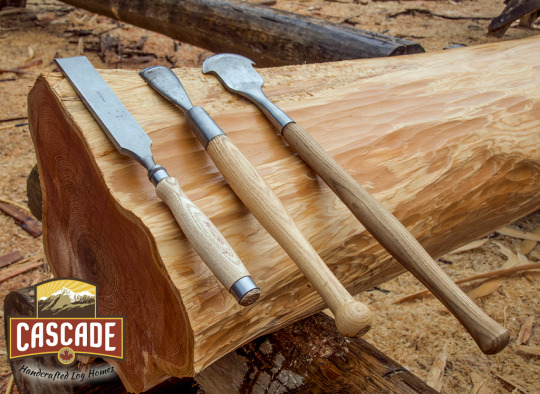
How we use some of our traditional handcrafting tools at the Cascade Handcrafted log yard.
🪵The Chisel on the left is used as a finishing tool for mortise and tenon, planing of door and window sills and notches.🪵The Gouge in the middle is used for carving, shaping, hollowing out and curved cuts. 🪵The Flaren on the right is used effectively on either side for planing, dressing and as a clean-up tool, rolling off the flared edge.
Visit our website!
#chisel#gouge#flaren#log homes#log home design#handcrafted log homes#log cabin#log home builder#craftsmen#traditional tools#builders#wood working#wood tools
2 notes
·
View notes
